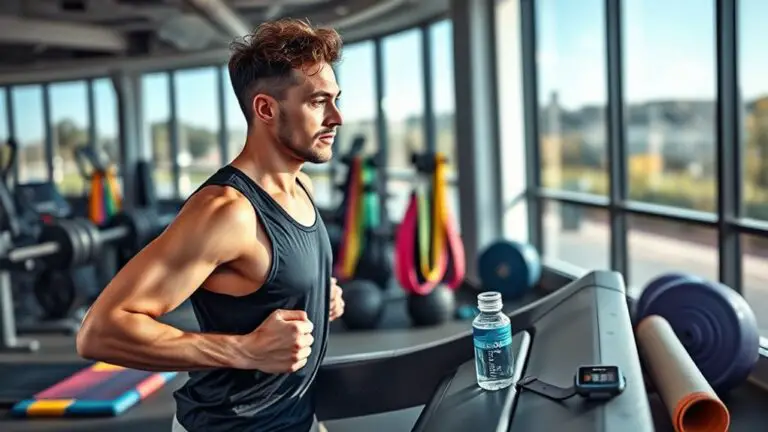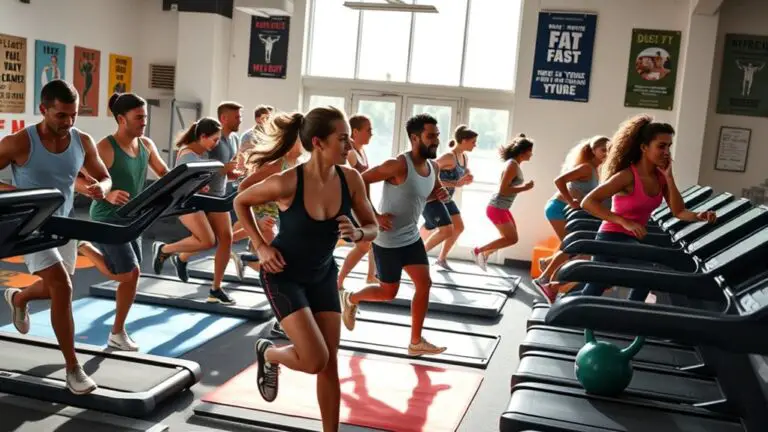The Pros and Cons of Virtual Reality Cardio Workouts
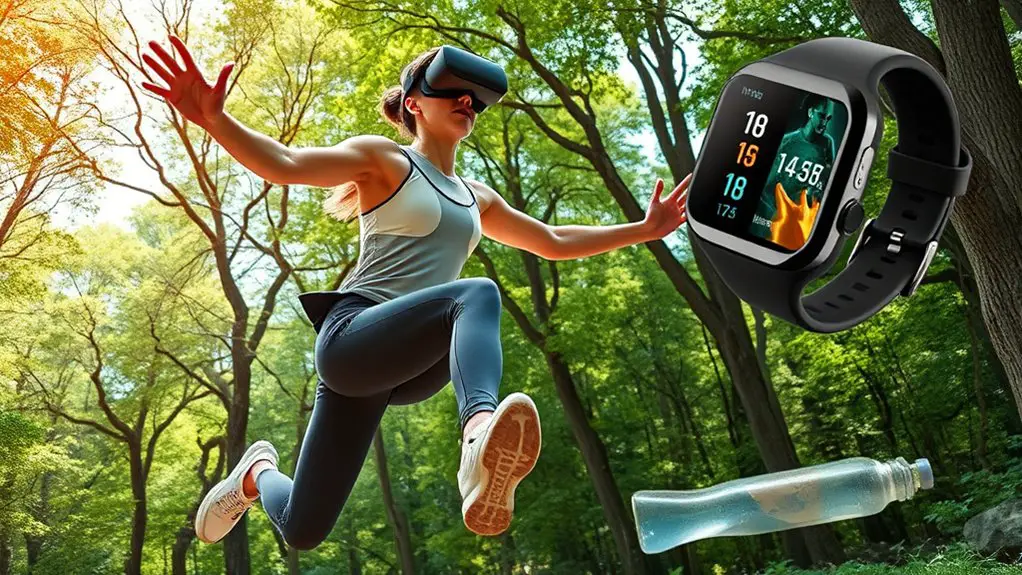
Virtual reality cardio workouts offer exciting benefits, like enhanced motivation, immersive experiences, and convenient home options. They transform exercise into a game, making workouts fun and engaging. However, there are downsides, such as the initial costs of VR equipment and space requirements for safe movement. Plus, you might face risks of overexertion if you’re not careful. Want to explore these pros and cons further? There’s more to discover about how VR can shape your fitness journey.
Enhanced Engagement and Motivation
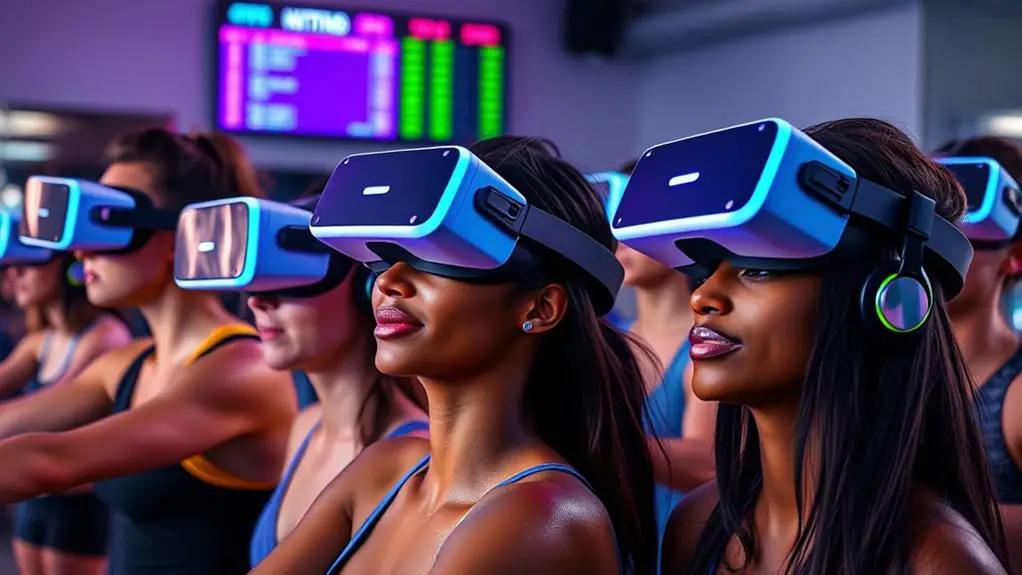
When you plunge into virtual reality cardio workouts, you’ll quickly discover how they can greatly boost your engagement and motivation. One of the most exciting aspects is the use of gamification techniques. These methods turn your workouts into challenges, making each session feel like a game rather than a chore. You’re encouraged to achieve high scores, reveal levels, and earn rewards, which keeps you coming back for more.
Additionally, social interaction plays an essential role in enhancing your experience. Working out alongside friends or competing against others in virtual environments creates a sense of community. You can share achievements, motivate each other, and even participate in group workouts, making exercise feel less isolating. This combination of gamification and social connections not only makes cardio more enjoyable but also helps you stay committed to your fitness goals. In short, VR cardio workouts transform exercise into an engaging adventure.
Immersive Experience and Variety
VR cardio workouts not only enhance your motivation through gamification and social interaction, but they also offer an immersive experience that transports you to diverse environments. Imagine running through a bustling city, cycling along a serene beach, or hiking in the mountains—all from the comfort of your home. With realistic simulations, you can feel the thrill of these experiences, making your workouts far more engaging than traditional methods.
The variety in settings keeps your routine fresh and exciting, helping you avoid the monotony that often comes with standard cardio exercises. You can choose from numerous environments, each designed to cater to different fitness levels and preferences. This adaptability means you can always find something new to challenge yourself, making it easier to stay committed to your fitness journey. By immersing yourself in these unique landscapes, you’ll find that your workouts become not just a task, but an adventure.
Accessibility and Convenience
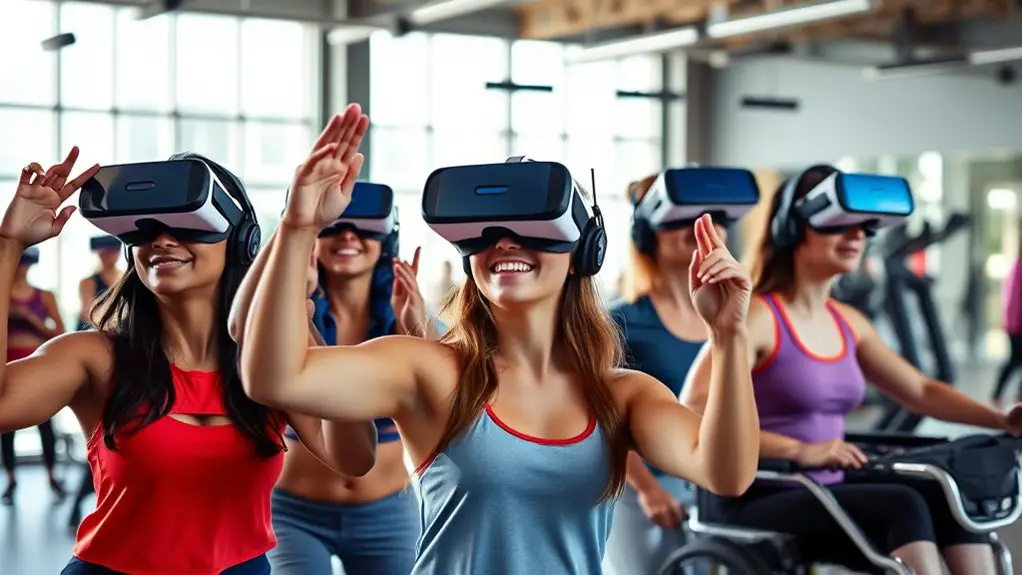
While traditional gym memberships can be costly and time-consuming, virtual reality cardio workouts bring fitness right to your living room. With just a headset and a little space, you can transform any area into a dynamic workout zone. This level of accessibility means you can squeeze in a home workout whenever it fits your schedule—no more commuting or waiting for equipment.
The user experience in VR workouts is tailored to keep you engaged and motivated. You can choose from various environments and workout styles, making it easy to find something that suits your preferences. Plus, many VR platforms offer guided sessions, ensuring you’re never alone in your fitness journey. With the added convenience of working out at home, you can enjoy the flexibility to exercise on your terms, fitting in those cardio sessions whenever you want. This way, staying active feels less like a chore and more like an adventure.
Cost of Equipment and Setup
Although the initial investment in virtual reality equipment can seem intimidating, it’s important to contemplate the long-term benefits and savings. When you consider budget considerations, think about how much you typically spend on gym memberships or fitness classes each month. Over time, a VR setup could save you money, especially if you use it regularly.
Additionally, the equipment’s longevity plays a key role in its value. High-quality VR headsets and accessories are designed to last, meaning you won’t need to replace them frequently. As technology advances, you may find upgrades worthwhile, but a solid initial purchase can keep you engaged for years.
Space Requirements and Safety Concerns

When you’re gearing up for a virtual reality cardio workout, it’s essential to have enough room to move freely. Make sure to take into account safety measures for your equipment and stay aware of potential environmental hazards in your space. Proper planning can enhance your experience and keep you injury-free.
Room for Movement
Creating an effective space for your virtual reality cardio workouts is essential for both performance and safety. Ensuring you have adequate movement space allows for greater workout flexibility and reduces the risk of accidents. Here are some aspects to contemplate when setting up your area:
- Clear Obstacles: Remove furniture and items that could interfere with your movements.
- Adequate Size: Aim for a space that’s at least 6 feet by 6 feet to accommodate various activities.
- Flooring Considerations: Use non-slip mats to enhance stability and grip during your workout.
Equipment Safety Measures
To guarantee a safe and effective virtual reality cardio workout, it is vital to pay attention to the equipment you use and the space around you. Make sure you’ve got enough room to move freely, minimizing the risk of bumping into furniture or walls. Wearing protective gear, like wrist guards or a helmet, can further reduce injury risk during intense sessions. Regular equipment maintenance is fundamental, too; check your VR headset and controllers for any wear and tear. Keeping your gear in good condition not only enhances performance but also guarantees your safety. By being proactive about your environment and gear, you can enjoy a more immersive and enjoyable workout experience without unnecessary hazards.
Environment Hazards Awareness
A safe workout environment is essential for fully enjoying your virtual reality cardio sessions. You need to be aware of potential virtual environment hazards that can disrupt your experience or lead to accidents. To guarantee safety, consider these key aspects:
- Space Requirements: Make sure you have ample room to move freely without hitting furniture or walls.
- Safety Concerns: Remove obstacles and hazards that could cause trips or falls during your workout.
- Awareness Training: Familiarize yourself with your VR setup and surroundings to enhance your spatial awareness.
Potential for Overexertion and Discomfort
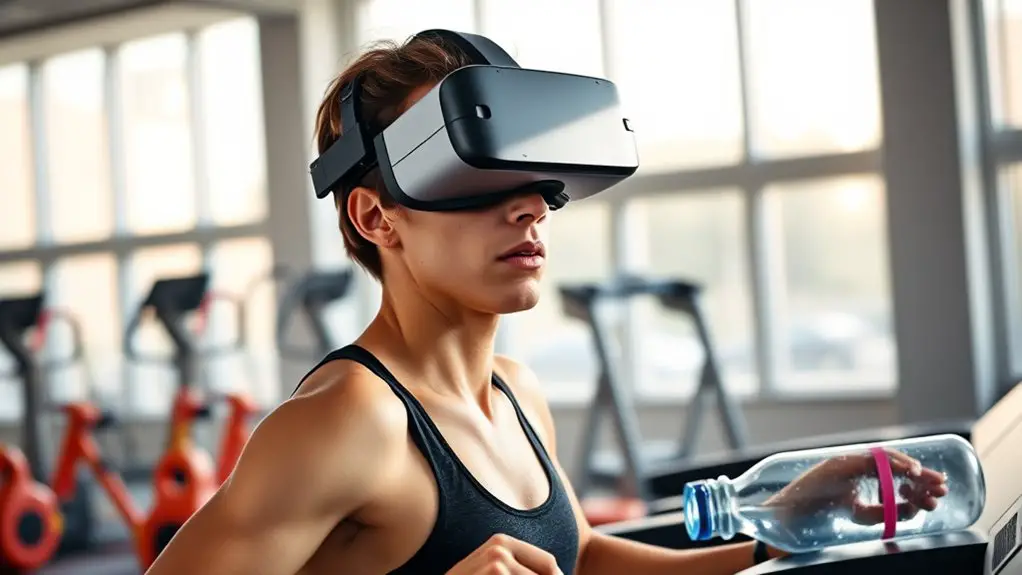
While virtual reality cardio workouts can provide an exhilarating experience, they also carry the risk of overexertion and discomfort. When you’re immersed in a virtual environment, it’s easy to lose track of your body’s signals, pushing yourself harder than you should. This can lead to overwork risks, such as strains or injuries, especially if you’re not accustomed to high-intensity workouts.
Additionally, discomfort levels can vary widely among users. Some might experience motion sickness or fatigue due to the immersive nature of VR, which can detract from your overall workout experience. To mitigate these issues, it’s essential to set realistic goals and pay attention to how your body feels during sessions. Incorporating breaks and listening to your limits can help you enjoy the benefits of virtual reality cardio without compromising your health. Balance is key to ensuring your workouts remain both enjoyable and safe.
Frequently Asked Questions
How Does Virtual Reality Affect Cardiovascular Health Compared to Traditional Workouts?
Imagine diving into a vibrant world where your heart races not just from effort, but from the thrill of adventure. Virtual reality offers an immersive experience that can elevate your heart rate, often more than traditional workouts. It engages you in ways that keep you motivated and excited. While both methods can boost cardiovascular health, VR adds an element of fun that can transform your routine, making it easier to stick with your fitness goals.
Can Virtual Reality Workouts Accommodate Different Fitness Levels Effectively?
Yes, virtual reality workouts can accommodate different fitness levels effectively. You’ll find beginner adaptations that ease you into the routine, making it less intimidating and more enjoyable. As you progress, advanced challenges can ramp up the intensity, pushing your limits and keeping you engaged. This flexibility guarantees you can tailor your experience to match your current abilities, helping you stay motivated and committed to your fitness journey while enjoying a unique workout environment.
What Types of Virtual Reality Cardio Workouts Are Most Popular?
You’d think virtual reality cardio workouts would be all about the boring treadmill, right? Surprisingly, boxing simulations and dance workouts are stealing the spotlight! These immersive experiences let you punch your way to fitness or groove to the beat, making exercise feel more like fun than a chore. Whether you’re ducking and weaving in a boxing match or busting moves on the dance floor, you’ll definitely break a sweat while enjoying yourself!
Are There Social Features in Virtual Reality Fitness Platforms?
Yes, many virtual reality fitness platforms offer social features that enhance your workout experience. You can engage in multiplayer experiences, allowing you to connect with friends or meet new people while exercising. This social interaction adds a fun element to your routine, making it easier to stay motivated and accountable. Whether you’re competing in challenges or simply working out together, these features can transform your fitness journey into a more enjoyable and communal experience.
How Often Should I Switch Virtual Reality Workouts for Optimal Results?
Did you know that changing your workout routine every 4 to 6 weeks can lead to better fitness results? For best results, it’s important to follow frequency recommendations and incorporate workout variety into your routine. By frequently switching up your virtual reality workouts, you’ll not only keep things interesting but also challenge different muscle groups. Aim for a mix of cardio, strength, and flexibility workouts for a balanced approach that keeps you engaged and progressing.
